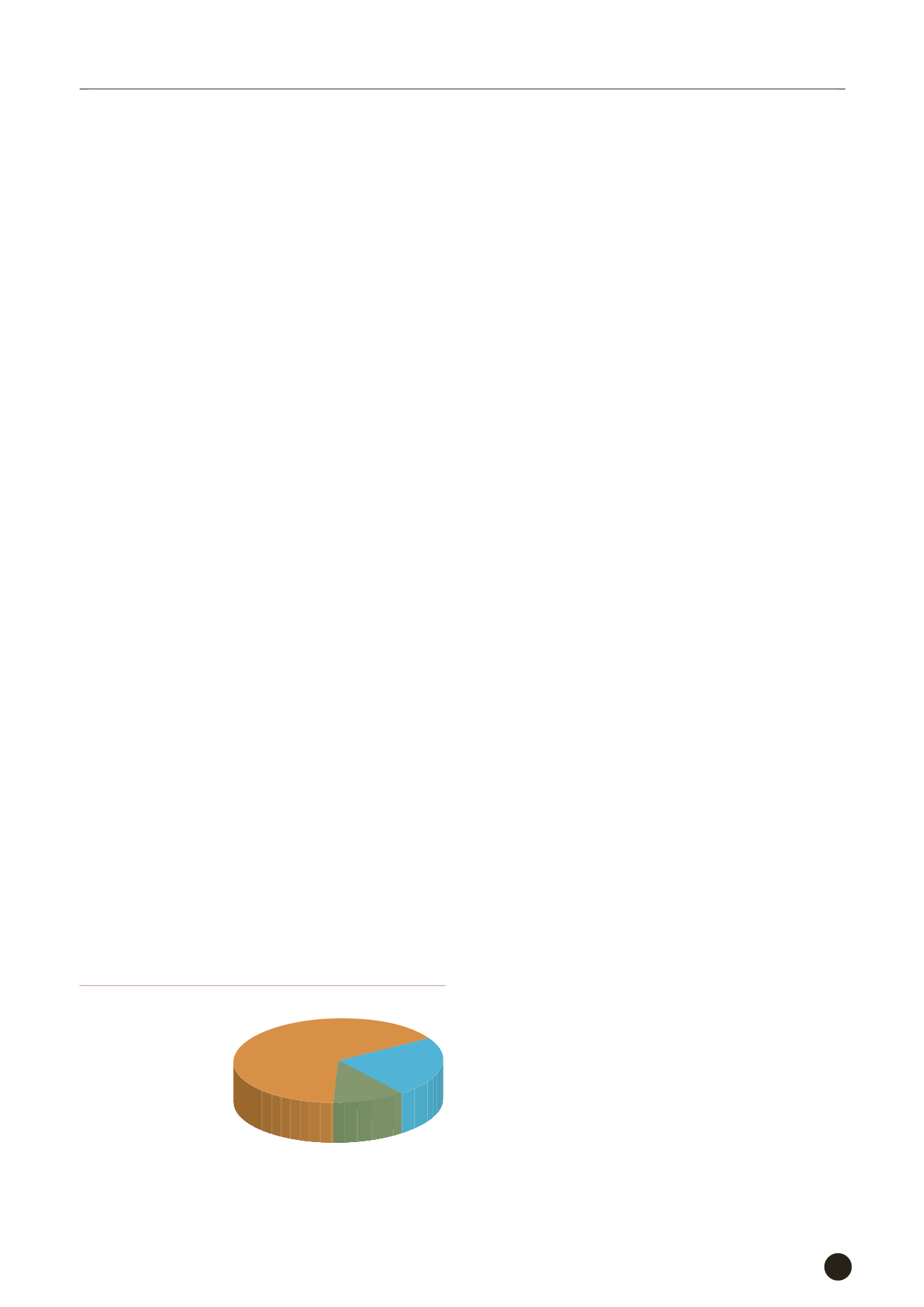

Financial Management
In financial planning, this year our investment was
guided by an actively defensive asset management
strategy, allocating to primarily fixed-income assets and
supplemented by risk-bearing assets. Balanced asset
allocation ensures the sufficient liquidity of the Fund and
the security of the Fund principals.
Any financial investment plan not related to our main
operations must be set with the priority to secure the funds
needed by the TaiwanICDF for our foreign aid development
projects, adhere to the past principle of appropriate asset
allocation, and precise control the maximum investment
ratio for the risk-bearing asset portion. In 2014, this
ratio ceiling was 2.55 percent of the Fund’s net worth.
Subsequently, with the Board’s resolution, this ratio ceiling
was raised to the current 6.37 percent in 2015 with a
view to using uncommitted funds to acquire stable, mid-
to-long term fixed income from investment. This income
is expected to help the TaiwanICDF achieve the goal of
sustainable development in our operations.
Fund Utilization
The TaiwanICDF’s fund balances (the Fund) are derived
predominantly from two sources: the founding fund and
donated fund; and accumulated earnings.
The Fund is used for reimbursable international
cooperation and development projects, such as long-term
investment and lending development projects. To enhance
the effectiveness of fund utilization, a portion of the
uncommitted Fund is set aside and invested in a portfolio
of financial instruments. Such investments take the form of
fixed-income instruments, such as bonds, bank deposits
and short-term investments, supplemented by risk-bearing
instruments in the form of exchange-traded funds (ETF).
Annual earnings are mainly derived from interests and
revenues from long-term capital investments or lending
Investments for Development
Projects 11%
...................................
Financial Investments 66%
...................
Lending for Development
Projects 23%
..........................................
Figure 1 Fund Utilization (2015)
Administration
61
development projects, as well as from investments in a
portfolio of financial instruments. These are used to finance
international projects on a non-reimbursable basis and
operational expenses. As of December 31, 2015, the total
outstanding amount of long-term investment and lending
development projects comprised 34 percent of the Fund,
while 66 percent was allocated to a portfolio of financial
instruments. Accounting for commitments made but not
yet fulfilled, the value comes to 59 percent of total fund
balances, while financial instruments accounted for 41
percent.
In 2015, the overall rate of return for the Fund was
1.84 percent excluding foreign exchange gains (losses)
and other income (expenses), and 2.37 percent when
accounting for foreign exchange gains (losses) and other
income (expenses). Of this, the rate of return for long-term
investment and lending development projects was 2.03
percent and financial investments 1.74 percent. Annual
revenue (excluding foreign exchange gains (losses) and
other income (expenses)) was around NT$290.37 million.
Accounting for foreign exchange gains (losses) and other
income (expenses), annual revenue comes to around
NT$374.21 million.
In 2014, the TaiwanICDF had a gain of NT$44.89 million
through the disposal of exchange-traded fund investments
so that annual revenue in 2014 was NT$381 million.
Although there was a drop in annual revenue of around
NT$6.79 million in 2015 excluding the income from ETF,
the difference was 1.78 percent. Compared to an annual
income of NT$274.5 million in 2013, this represented an
increase of NT$99.71 million or 36.3 percent. Financial
investment revenue distribution from 2013 to 2015 is shown
in Figure 2.
Management of Long-term Lending and
Investments
As of December 31, 2015, the TaiwanICDF was
committed to 14 long-term investment projects, for
which the balance of investments stood at US$46.99
million and NT$124 million. There were also 85 lending
development projects with approved loans of US$522.45
million, €56.55 million, and other currencies equivalent to
US$18.1 million. Accumulated loan disbursements stood
at US$447.65 million, €20.84 million and in other currencies
equal to US$8.5 million, equivalent to 83.18 percent of all
commitments, while total loan principal repayments stood
at US$387.79 million, equivalent to 75.13 percent of all
funds extended.
As for revenue derived from reimbursable long-term
investment and lending development projects, interest


















